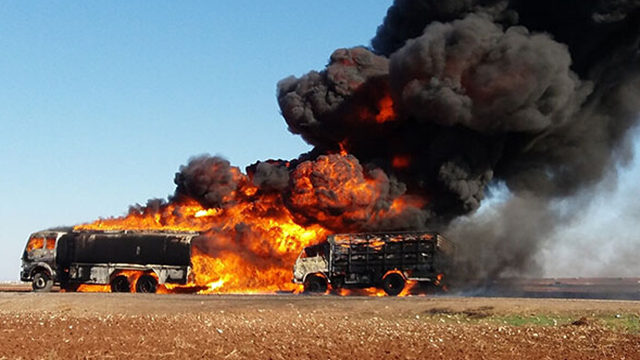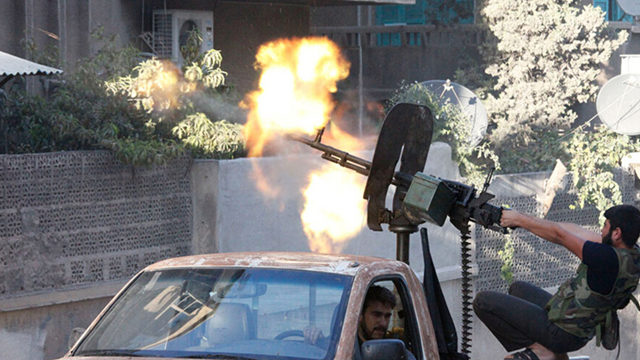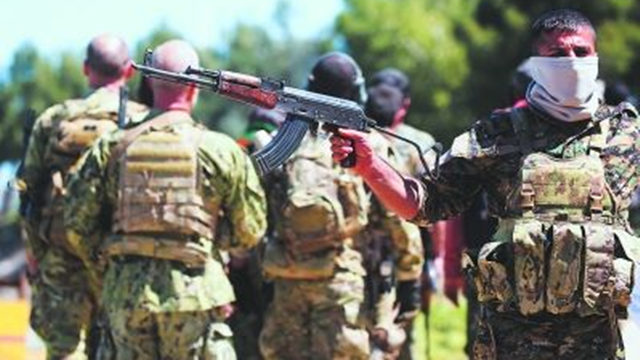A small-scale "world war"! Deeply reveal why the Syrian crisis can’t stop.
CCTV News:In Syria, this crisis full of pain and destruction has begun to enter its eighth year. From Dongguta to Aflin, from "politicization of humanitarianism" to successive "threats of chemical weapons", these chaos and the wrestling behind the great powers have become the epitome of the chaotic situation in Syria. So, where did this crisis come from? Why has it lasted for seven years and still can’t stop?

Image source network
Time has entered 2018, and the Syrian crisis situation that lasted for seven years has not become clearer.
The conflict in Dongguta, the re-emergence of humanitarian problems and the self-talk of relevant countries have once again shattered the hope of peace that was ignited by the exit of extremist organizations.
Not only Dongguta, but also Russian and Israeli warplanes were shot down in succession. The anti-terrorist coalition led by the United States clashed with pro-government forces in Deir ez-Zor, and Turkey launched the "Olive Branch Action" against Kurdish armed forces in northern Syria — — The situation in Syria is more foggy than ever.
Huntington, an American political scientist, in his book The Clash of Civilizations and the Reconstruction of World Order, divided the "fault line war of civilizations" into three levels: the parties actually fighting and killing each other, the countries directly related to the main participants, and the top core countries — — If the top countries have no intention to end the war, the conflict will continue.
In fact, the Syrian crisis basically conforms to this theory: if the participants are divided into three levels, the extremist organizations that have lost their momentum only belong to the lowest level, that is, one that fights and kills each other, including the Syrian government, Hezbollah in Lebanon, opposition armed forces, the terrorist organization "Conquest Front" and the "Syrian Democratic Army" led by Kurdish armed forces.

Syrian opposition opened fire on buildings (image source network)
Above the hierarchy of factions on the ground, there are neighboring countries, including Iran, Turkey, Israel, Saudi Arabia and other Gulf countries. Most of them directly participated in the chaos in Syria and promoted the development of the situation.
However, although it has great influence on the situation in Syria, the surrounding stakeholders can’t influence the final situation in Syria, because at the top, there is a game between Russia and the United States, two world powers.
At present, Russia has announced that it has begun to withdraw its troops from Syria, and at the same time, it has promoted several dialogue platforms such as Astana and Sochi in an attempt to solve the Syrian issue as soon as possible. However, the attitude of the United States on the Syrian issue is extremely vague. It has established the so-called "border protection force", set up as many as 20 military strongholds, refused to participate in the Russian dialogue platform, and constantly created obstacles for the political settlement of the Syrian issue on the grounds of human rights and chemical weapons.

Armed personnel from the "People’s Protection Force" are on alert at the air raid site (image source network)
There are more than ten participants in the Syrian crisis, and there is also a decisive factor in the absence of the United States. What is more complicated is that the contradictions contained in the Syrian crisis are also different.
At the end of 2010, the so-called "Arab Spring" swept across the Middle East and North Africa. Since Tunisia, many countries such as Libya, Egypt and Yemen have experienced chaos.
In March 2011, protests broke out in Syria.
At the beginning, the main contradiction in Syria was the stay of President Bashar and the reform of the government. However, because of the interests, the protests in those years were used by many parties, including western countries. After seven years of conflict, ethnic contradictions, religious contradictions and sectarian contradictions have already evolved. From the Kurdish autonomy movement to the rise of Islamic fundamentalism in Syria, to the sectarian dispute between Sunni and Shia, the situation has developed beyond everyone’s expectations.
It is extremely difficult to completely solve any of the above contradictions, coupled with the attempts of many countries in the Middle East to intervene in the Syrian crisis to achieve regional hegemony, the historical grievances caused by the Palestinian-Israeli issue and the Israeli occupation of the Syrian Golan Heights, the refugee tide caused by the Syrian crisis, and the rampant terrorism and extremism in the 21st century — — The Syrian crisis has concentrated most of the major contradictions of mankind for centuries, so it has become a small-scale "world war" after its outbreak.
Xu Dezhi, a CCTV reporter, said that it is almost impossible for more than a dozen crisis participants to solve at the same time, or at least cool down so many contradictions and sort out the intertwined interests, which is the fundamental reason why, up to now, although many parties are calling for a political solution to the Syrian issue as soon as possible, it still has little effect. Igniting the fuse of war is very simple, but ending a war is beyond people’s control.